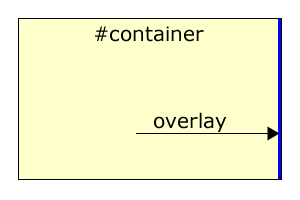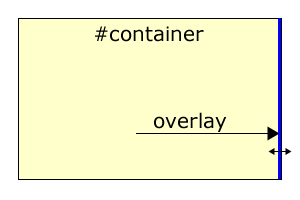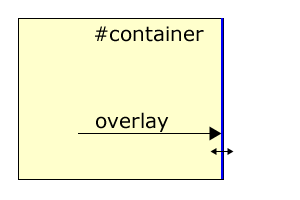For those who have been following Devlounge for a while, you’ll know that I wrote a script called Custom Reading Width. Custom Reading Width allowed users of a particular site to adjust a container’s width. Soon after publishing the article, it was suggested to me that I write something similar that allows a user to drag the edge of a container in order to adjust the container’s width. In an effort to write that script, Custom Reading Containers was born.
In all honesty, I’ve only tested out the script in Firefox 2.0, IE 6, and Opera 9. I should have labeled the script as a beta, but I’m taking Andrew Faulkner’s advice and leaving the beta out of it.
What are the Features?
- Custom Reading Containers (CRC) does not rely on any third-party JavaScript library. The script is lightweight and portable.
- The script will work on as many containers as your heart desires.
- The script saves the width of the container automatically. Custom Reading Width needed user interaction.
- CRC is hidden and unobtrusive.
- CRC works just as if you were resizing a window.
What are the Applications?
- CRC can allow users to adjust the reading width in full-width websites.
- CRC can potentially control containers in a web application.
- And more…
See the script in action. Demo1 | Demo2
How Does It Work
Custom Reading Containers works by laying a small overlay over the container you wish to resize. As you can see from the image below, the overlay is placed on top of the container.

The overlay’s width and appearance is controlled by CSS. If you like, you can make the overlay transparent, wide, skinny, or whatever style you prefer.
When a user hovers over the overlay, the cursor changes to indicate that the container can be resized.

The user resizes the container by clicking on the overlay and dragging the mouse to the left or to the right.

Once the user has finished resizing, the script saves the data to a cookie. When the user returns back to the page, a small PHP script calls the cookie and sets the width of the container to the user’s preferred width.
Where Can I Try It Out?
Here are two locations that you can try out. The first location demonstrates how the script reacts to multiple containers. The second example shows how the script will behave when used on a full-width layout.
Where Can I Download it?
Give Custom Reading Containers a try. Download Custom Reading Containers version 1.
Customizing the Script
The test script includes these three files: crc.js, crc.css, and test.php. I will stick to covering them for simplicity.
Make Sure the Container is Relative Positioned
The first thing to note is that any container having the overlay must be relative positioned. This can be accomplished quite simply in CSS by doing: position: relative; in your CSS file.
Modify the crc.js file
You need to modify the crc.js file to include your containers. Towards the bottom of the file, you’ll see code such as this:
[javascript]var container1 = containerCollection.Add(“sidebar”, “30%”, false, 10, 30, true);[/javascript]
For each container added, give the container a unique variable name such as container1 in this example. There are five things to pass to the containerCollection.Add() function.
- The container name. In this example, the container name was “sidebar.”
- The default width of the container. My default width for the “sidebar” container was 30 percent. Since the value must be a string, I entered in “30%”. You could have easily have put in “300px”.
- Whether the container is fixed or fluid. If the container is fixed, the value should be
true. If the container is fluid, the value should befalse. - The minimum width of the container. This is an integer value and can be in pixels or percentages.
- The maximum width of the container. This is an integer value and can be in pixels or percentages.
- Whether the min and max width of the container are in percentages or pixels. If the widths are in percentages, the value is
true. Otherwise, the value isfalse.
You repeat the above steps for each container to be resized.
Insert the PHP Code
The following code must be inserted on any page utilizing Custom Reading Containers. The code is in PHP, so a PHP file is needed to run the script. The PHP script reads in the cookie set by the JavaScript and sets the styles up accordingly. The code needs to be inserted within the head tag.
[php]
0)) {
?>
[/php]
Modify the StyleSheet
The code in crc.css is more-or-less setup to control the overlay. You can easily just paste the overlay code into your existing CSS file. As stated earlier, you can control the overlay’s appearance using your StyleSheet.
[css]
.crc-overlay {
display: block;
position: absolute;
right: 0px;
top: 0;
width: 5px;
cursor: e-resize;
z-index: 100;
background-color: #000066;
}[/css]
Conclusion
Hopefully Custom Reading Containers can help you out, whether it is assisting your users in adjusting the reading width, or perhaps controlling some function of a web application. If you have any feedback or bug reports, please leave a comment.
If you like this script, or would like to show your support, please help out with a Digg.
